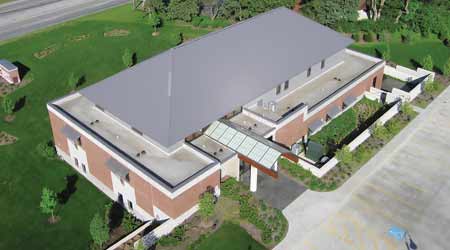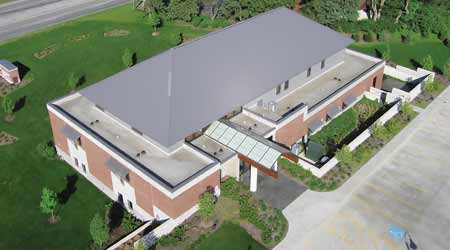How to Make Roofing Projects Work

 Early attention to inspections, specifications and contractors can pave the way for successful, long term roof performance.
Early attention to inspections, specifications and contractors can pave the way for successful, long term roof performance.Early involvement in the planning stages of roofing projects can help managers minimize disruptions to facilities and ensure long-term roof performance.
By James Piper, P.E. Roofing Article Use Policy
Maintenance and engineering managers should not undertake roofing projects lightly. The projects in institutional and commercial facilities can be messy and disruptive to building occupants and visitors. They can quickly become a nightmare. They eat up large quantities of time, labor and money. They seldom go smoothly, and when completed, they often do not live up to expectations. So it is not surprising that managers put off most roofing projects as long as possible.
Roofing projects do not have to be that way. Managers can plan and perform the projects in ways that will help minimize disruptions. To achieve this goal, managers need to get involved well before the decision is made to replace or recover a particular roof, and they need to stay involved throughout the entire project, including the resolution of any warranty issues. By doing so, managers can greatly improve the odds that their roofing project will succeed.
Looking for trouble
The planning for roofing projects starts well before signing the contract. Roof problems begin on day one of a new roof, and they accelerate as the roof ages. Roofs rarely fail suddenly, but they do give warning signs.
Blisters form, seams lift, flashing pulls away, and surfaces alligator. Not recognizing the warning signs or failing to take action when they are noted only means the roof — not the manager — will be the one picking the time for a replacement project.
One early step in the planning process is to schedule regular roof inspections — typically, once in the fall after the roof has weathered the extremes of summer heat and once in the spring to check for damage from ice and snow. Additional inspections should occur after major weather events that might have damaged the roof. Managers should file their resulting reports in such a way that inspectors can compare current to past inspections and more easily track deterioration. This history provides insights into the rate of deterioration.
Roofs have finite life spans. Even if a roof has not yet developed major, visible issues, it is a good practice to start developing plans for its eventual replacement. This step will prevent managers from having to rush the replacement project in the event of a failure.
Managers will have more options when it comes to replacement if they have planned for replacement ahead of time. Options evaporate when the situation becomes an emergency.
posted on 11/28/2017
Comments
Source: Commercial Roofing




































No comments yet.